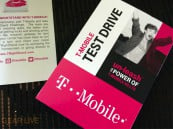Latest Gear Live Videos
A partnership is ideal when two or more parties want to go into business together. Using the online business model as an example, you may have the knowledge about running a business and managing its finances, but not a clue about web design, marketing, or advertising. If you happened to know someone with strong design and marketing skills, you may choose to start a company together. It is great to enter into this kind of relationship with someone you trust and can bounce ideas off of. There are a few things to look out for when forming a partnership. Each member pays taxes based on the percentage of the company that they own. This should be clearly explained and identified before starting up. A Partnership Agreement should be drawn up and signed by all parties. This should lay the foundation for the dividing of all assets and liabilities. If no agreement is in place, then all members will be considered equally liable and/or entitled to all assets and liabilities regardless of how much more or less one person works than another.
Advertisement
The simplest and easiest legal formation of a company would be the Sole Proprietorship. Usually an accountant is not required, and all that one needs to do is file a simple form. The sole proprietor is the boss, the owner, and the company all in one. While this is a simple and straightforward way of doing things, you will not have the benefit of having your personal assets protected separately from those of the business. For example, if someone were to sue the business, for all intents and purposes they would be suing you.
Why would you want to go through the hassle of incorporation when a sole proprietorship is so much simpler to form and manage? It is certainly a loftier task to incorporate, and there are plenty of additional laws and regulations set by the government that you would have to adhere to. Then there is the issue of having to pay both personal and corporate taxes. At first glance, it may not sound like the preferred method of doing things – until you consider some of the advantages:
Health insurance premiums can be considered a business expense, and thusly are a deduction.
The assets of the company are owned by the company rather than an individual. This provides substantial personal protection, as the business should only lose its assets in the event of bankruptcy. Your personal assets remain intact. This is especially relevant if you plan to offer services which may be susceptible to lawsuits.
Capital can be raised by selling shares of the company.
If you believe that incorporation is the way to go for your business then you have two options. You can form a C corporation, or a subchapter S corporation. Most small businesses which choose to incorporate will go with subchapter S route.
When deciding to start a business of any type, it is key to determine how you plan on legally choosing the type of infrastructure you plan to go with. A business needs to be legally forms in one of a few ways in order to be recognized by local, state, and federal entities. Today we are going to take a closer look at the options that are available to you, and what they all mean. From becoming a sole proprietor, a limited liability company, or a full on corporation, each one has its own benefits and drawbacks.
One of the many challenges of any small business owner is that, without help, they need to perform as a jack of all trades. The problem there is that while you may have a deep topical knowledge of your business, the actual running of all business aspects behind the scenes is something you may not understand. The fact that you can be successful at doing business on eBay doesn’t make you a tax expert. Hiring an accountant to ensure that the back end of your business is (and stays) legitimate is a wise move. My first recommendation is that you get advice from friends, associates, and business contacts regarding accountants who they have done business with. These first hand recommendations are worth their weight in gold. I believe that it is important to go with a Certified Public Accountant (CPA) rather than a standard public accountant. As a small business owner, shop around for the smaller accounting firms that have experience working with businesses of your size – and be sure to ask the right questions. Find out about their experience in working not only with small businesses, but also with business whose business model is closely, or exclusively, tied to the internet.
I have previously stated that I believe it is important for anyone running a business on the Internet to at least become familiar with the basic aspects of web design and HTML. Of course, if you have concentrated your knowledge on the business side of things and aren’t prepared to learn a programming language in order to come up with a dynamite web design, there are those who will happily offer you their services to do it for you. In fact, the $50 per hour or so you may spend could very well pay off nicely in other areas of the business. As an example, most web designers that I know will also do images. This means you can have one person work on your entire branding model - with your input and feedback, of course. This allows you to have complete synergy between your website, business cards, letterhead, brochures, and any other branded materials you may want to use. Another thing you may consider is having a designer create your logo along with a color scheme and web page template. All you would need to do is input the actual text and images into the site, but you would have your logo done and a template which you could use whenever you want to add a new page/section to your website.
While $50 an hour (which can be low) sounds like a bit much, more than likely you will be able to get a great end result that you will stick with - and build your company around - for many years. My advice would just be to make sure you have an active role in the creative process, and do not settle for a finished product that you are not happy with. Be certain that the design laid out meets your needs, as well as the needs of your target audience.
In this day and age, it is hard for me to imagine that anyone out there would still be connecting to the Internet on anything less than a high-speed connection. The problem there, though, is that if I neglect that fact that there are still many millions connecting at 56k speeds (or slower!) then my web design could end up detracting many of those in my target audience. Bell and whistles are nice in just about every place except the Internet. Online, simple and clean will beat out over-the-top and fancy just about every time. Consider this when you are coming up with a design for your home on the web. Those surfing on low-speed connections will not have the patience or tolerance to sit and wait for your image filled page to load. More than likely they will hit the stop button, and miss out on the content you aim to provide. Be sure to optimize your images so that they enhance your website, rather than detract from it.
One thing you can do if you plan to have a marketplace which shows a bunch of products is to create thumbnails. Thumbnails are about the size of a stamp, and are just a small preview of the larger image. They are low-resolution and can be downloaded quickly. A link beneath it inviting users to click the image for a larger one gives the choice to the reader on whether they would like to wait for that image to load or not. Also, be sure to remove any excess from images before putting them on the web. Cropping is an excellent way to eliminate both physical screen size of an image, as well as the time it will take for it to be downloaded. You will also need to be sure the image fits into your template on multiple browsers. Be sure to test results in Internet Explorer, Firefox, Mozilla, Safari, and Opera - and use a few different resolutions as well. Be sure your image doesn’t break your template or detract from your text.
Users who want to save time may actually disable their web browsers image display function. This means that no matter where they choose to forage on the Internet, no images will be displayed to them. Rather than leave those areas with empty space, you can put in an image description. Just use the description tag, and give a one line description of the image. This way, if the image is not loaded, the viewer will still get the context of what they are supposed to be seeing.
If you have limited knowledge of HTML, the chances are good that you won’t be able to open up Wordpad and code a terrific website. If you are going to run a business on the Internet, it is good to at least get your feet wet when it comes to web design. One very easy way of doing this is to use a WYSIWYG web editor. WYSIWYG stands for “What You See Is What You Get” and is pronounced “wizzy-wig”. Using a WYSIWYG editor allows you to see how your page will look to visitors over the Internet as you design it. You have formatting toolbars that can play with text, images, and forms with just a few clicks instead of having to remember HTML tags. If you want to take simple web design for a spin, check out Microsoft FrontPage, Macromedia Dreamweaver, or Adobe GoLive. If you want something free, check out XStandard.
This just goes to show that developing a unique idea that creates a community with a service that people can get behind can make you a success. Today, Google acquired its thirteenth third party company when they bought Dodgeball.com. If you are unfamiliar with Dodgeball’s service, here is a rundown:
Dodgeball is a service designed to get you in face-to-face contact with friends, friends of friends, and even crushes. All that is required is a cell phone with text messaging. You sign up for an account and give Dodgeball a list of email addresses for your friends. These people become a part of your network, as do any friends that they recommend when they sign up. The fun begins when you are out and about. You simply send a text message to Dodgeball as follows:
To: YourCity@dodgeball.com
Message: @NameLocation
Now, Dodgeball is available cost-free in just about every major US city. So if I were doing this from Seattle, I would send a text message to seattle@dodgeball.com, and if I were at the Space Needle then my message would be “@Space Needle”. Now Dodgeball goes to work. Any of my friends who are within a 10 block radius recieve an email and/or text message telling them “Your friend Andru is at Space Needle [address here]. Why not stop by and say hi?” It is simple a great meetup tool. Now, you can format your message in different ways so that instead of contacting your friends, it will send you back a list of friends of friends in the area. You can even just typ in a destination, and it will send you a message back telling you the address and cross streets. Google obviously aw the potential in this service, as have many of its users. If you live in a major US city, check them out at www.dodgeball.com.
One thing that can get very overwhelming as far as business is concerned is email. Personally, I receive over 400 email messages per day. If I didn’t have a system in place to manage it all, I would quickly become a victim of information overload. Your email client can do a lot more than just display electronic messages sent to you from colleagues and friends. We take a look at a few ways to use email to save time, and bring you even more business, after the jump.
Click to continue reading Make Email Work For You
Advertisement
© Gear Live Media, LLC. 2007 – User-posted content, unless source is quoted, is licensed under a Creative Commons Public Domain License. Gear Live graphics, logos, designs, page headers, button icons, videos, articles, blogs, forums, scripts and other service names are the trademarks of Gear Live Inc.











